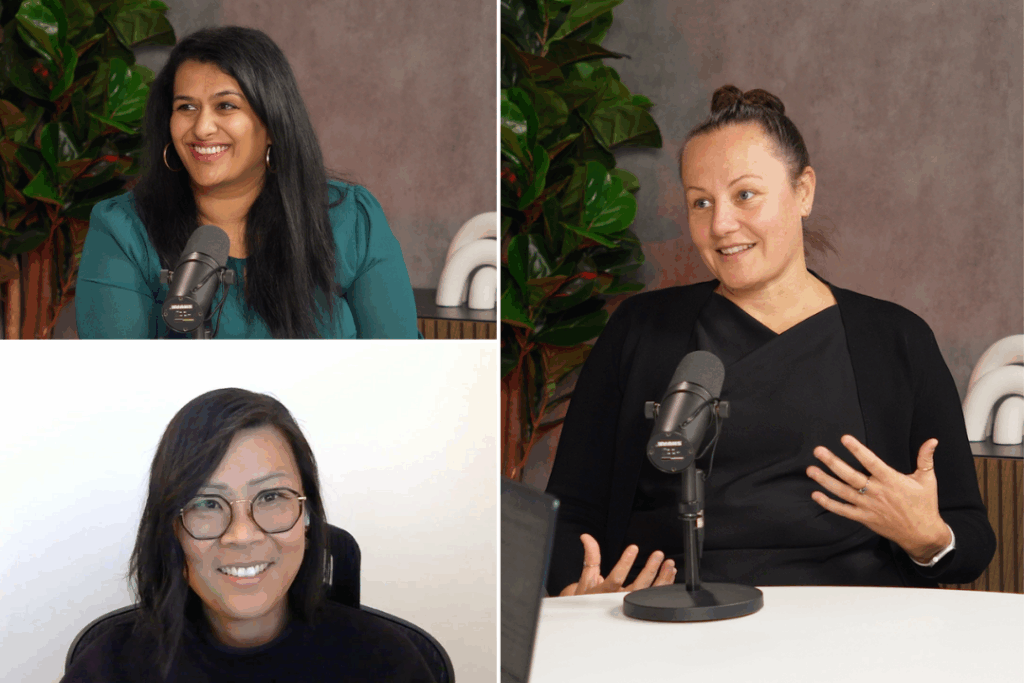Just 15 per cent of private investment in Australia went to startup teams with at least one female founder in 2024, according to the State of Australian Startup Funding report.
Imagine all the things we could solve if a more diverse representation of founders were funded?
Through the podcast series, What We Could Solve, Women’s Agenda is exploring the massive startup investment gap between male and female founders, and sharing solutions for closing it.
In part one, we outlined the problem, as shared by several prominent female founders and investors in the sector.
Now in part two, we’re digging into some initial solutions, starting with addressing the gatekeepers of capital: Venture Capitalists.
Venture capitalists, or VCs, are investment decision makers in a profession that is typically dominated by men, and according to a survey across the sector last year, seriously lacking in cultural diversity. This matters when it comes to what’s driving the gender gap in private investment, and it matters in terms of what we can solve as a country.
Of the 168 responses received from VCs in the State of Australian Startup Funding report, just 61 per cent said they were engaging in ensuring diversity within their investment teams to help promote better funding outcomes for all founders.
Less than half (48 per cent) were pursuing initiatives to diversify sourcing channels, and less than half again, 46 per cent were sourcing deals from underrepresented entrepreneur groups.
The real kicker stat? Just over half were recording and analysing diversity metrics.
How can VCs ever hope to improve on diversity metrics if they’re not actually recording where they are at?
According to the same survey, only 28 per cent of respondents sought to ensure diversity in Portfolio Management and boards, and just 13 per cent have funds for underrepresented founders.
There is so much low-hanging fruit in these stats.
There are so many solutions that could be explored, starting with recording diversity metrics.
On the podcast, founder and investor Preeti Mohan starts by sharing some simple advice to VCs on improving diversity. “Be honest with yourselves because the stats are there,” she says.
“It’s obvious there is bias baked somewhere into the system. Unless you’re taking a good, hard look and trying to be proactive in solving it, nothing’s going to change.”
Mohan believes transparency is a good start: in terms of diversity metrics within investment decisions, but also in terms of offering feedback to founders on their processes. This transparency should also extend to outlining exactly what the investment process will involve, including terms sheets, and points to Scale Investors (a gender lens investor) and Giant Leap (an impact investor) as doing a good job here.
In part one of this series, founder investor and now CEO of Birchal, Kirstin Hunter, shared how she’s been hearing messages about women just needing to “lean in” and do things differently. Despite women doing these things, nothing has changed in terms of the investment funding gap.
She believes VCs could very easily increase the proportion of investment going to female-founded companies if they genuinely wanted to.
But she also goes direct to the source of the money — to Limited Partners or LP, the individuals or organisations that contribute capital to a fund, but don’t actively participate in how the fund is allocated.
“LPs are the VCs’ bosses,” she says. “VCs respond to where their money is going to come from, which is the LPs and particularly in Australia, we have these massive superannuation funds that make up the majority of the larger VC funds. They have a great opportunity to say to those funds, ‘we’ll give you, say, half a billion dollars to invest on the condition that you have at least 40 per cent going to either gender”
Hunter also wants to see more diversity represented among investment decision makers.
“You do see a majority of male investors in the VC ecosystem, where you do see more diverse representation, often it’s women in more junior roles and then men in the senior investment partner roles. I think this is a huge opportunity.”
“We like to think they [VCs] are data driven and analytics, but actually a lot of it is about the founder, and a lot of it is about the connection with a founder if it’s someone who you can relate to. The more women we have in investment positions, the more likely we are to have that diversity in the connections sparked between investors and the founder.”

Rachel Yang is a VC herself and a partner at investment firm Giant Leap.
She believes Giant Leap’s data and reporting, as well as the way they work together as a diverse investment team, support the process in attracting a wider range of founders.
“We have a diverse investment team, and we make sure that the decision makers are looking at the problems that founders are solving with a lens of diversity,” she says.
“Diversity needs to be embedded from day one in a team. And so whether that’s a startup or a venture capital fund, you’ve really got to have that as a foundation. And if you don’t have that, the culture is very difficult to change.
“So that starts with the team, and then it goes to the next part, which is actually making those investment decisions, and the processes with through which you make those decisions. How do you meet founders? Is there gender diversity in the investment team that meets a particular founder or founding team? How do they frame their questions to these founders? There are a whole lot of elements that flow on from that core starting point of the venture capital investment team itself.”
And while founders to be able to deal with rejection and feedback, Yang says investors can do better and reframe how they let founders down.
A big part of her role is saying “no”, and it’s nothing personal; it could be a “no” for many different reasons.
She points to the US firm, Bessemer Venture Partners, as having an “anti portfolio page” that is about “honouring the companies we missed”. It shares the businesses they have said no to, including Atlassian, Apple and Airbnb, highlighting that investors make mistakes, and that a “no” could really be the beginning of a different opportunity elsewhere.
The above are just some of the solution ideas shared in Part 2 of this podcast series on closing the gender gap in startup investment.
These first ideas barely scratch the surface of solutions VCs can and should be pursuing if they genuinely want to help close this gender gap
We’ll continue exploring some of these solutions throughout this series, including more on what VCs should be doing, all to appeal to this idea of What We Could Solve, by getting more women funded.
These guests share more in Part Two of What We Could Solve, currently available in the Women’s Agenda podcast feed, including on Apple and Spotify. Later, they share more on some of the solutions they believe can be deployed for actually addressing these issues and making a difference on the gender pay gap.
Here is Part One of this series, sharing founder experiences of the gender funding gap and their ideas on why it persists.
Check out more on this series here.



